#episcopal palace
Text
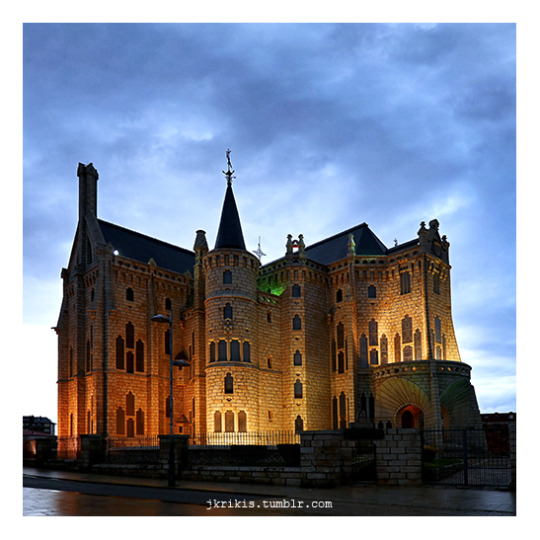
camino frances / astorga
© 2023 Yiannis Krikis
#astorga#episcopal palace#lensblr#lensculture#fine art photography#photographers on tumblr#architecture#gaudi#spain#camino frances
90 notes
·
View notes
Text

PALACIO EPISCOPAL DE ASTORGA - ESPAÑA
#palacio episcopal#episcopal palace#astorga#castilla y león#castile and leon#españa#spain#europe#europa
104 notes
·
View notes
Text

Ángeles en el jardín episcopal, Astorga, 1998.
#sculpture#angels#episcopal palace#antoni gaudi#astorga#león#castilla y león#españa#photographers on tumblr#camino francés#camino santiago#1998
2 notes
·
View notes
Text

Episcopal Palace of Guayaquil, Ecuador
Ecuadorian vintage postcard
#ecuadorian#carte postale#ephemera#photo#historic#postcard#episcopal palace#ecuador#postal#tarjeta#guayaquil#episcopal#briefkaart#ansichtskarte#photography#vintage#postkaart#postkarte#palace#old#sepia
5 notes
·
View notes
Photo

Vidrieras, palacio episcopal diseñado por Antoni Gaudí, Astorga, León, 2011.
#stained glass#episcopal palace#antoni gaudi#astorga#león#castilla y león#españa#2011#photographers on tumblr#camino santiago#camino francés
31 notes
·
View notes
Text










Solsona, Spain (No. 3)
The Episcopal Palace of Solsona, attached to the cathedral , is a building from the late 18th century, in a neoclassical style in Solsona, Spain. It is the seat of the bishopric of Solsona.
Taking into account the deficiencies that the episcopal see presented, Bishop Rafael Lasala entrusted the construction of a palace, between the years 1776 - 1779, to the master builder Francesc Pons. The main façade of the palace is considered a typical representation of the Catalan neoclassical. It is built on an old monastery.
Inside the palace there are also the Diocesan Archive and the Diocesan and Regional Museum of Solsona, 2 which keeps remains from the periods ranging from the Neolithic to the Baroque. It has important Romanesque pieces , such as the paintings from the Church of San Quirico de Pedret, the altarpiece from the monastery of Sant Jaume de Frontanyà, a column with attached figures, from the Romanesque cloister of the Solsona cathedral, the sides of the altar of Sagás, as well as important examples of Gothic and Renaissance, and a room dedicated to salt sculptures.
Source: Wikipedia
#Episcopal Palace#Main square#Solsona Cathedral#Solsona#travel#original photography#vacation#tourist attraction#landmark#architecture#cityscape#old town#fountain#Solsonès#Lleida#Catalonia#España#Spain#Northern Spain#Southern Europe#Nucli antic#alley#summer 2021
0 notes
Text

Plaza del Obispo, Málaga, Spain: The Plaza del Obispo is located in the Andalusian city of Malaga, Spain. It is located in front of the main façade of the Cathedral of the Incarnation in Malaga and the Episcopal Palace of Malaga, at the confluence between Molina Lario and Salinas streets in the historic center of district 1. Wikipedia
63 notes
·
View notes
Text
Today’s chapter, especially the part where M. Myriel exchanges his episcopal palace for the hospital, brought to mind something I saw at the Museum of Medical History in Rouen. (In fact, the museum is called Musée Flaubert et Histoire de la Médecine—it might sound odd, but it's incredibly informative and worthwhile. If you're ever in Rouen, don’t miss it.) They reconstructed a nineteenth-century infirmary, complete with a huge bed meant for 6 to 8 people (see the photo below). It’s hard to imagine how they could fit there! Such places were terribly overcrowded, making the episcopal palace a more fitting location for a hospital.
One thing that bothered me while reading (which @shsenhaji also touched on today) is that although M. Myriel’s decisions about his expenses are incredibly kind and generous, and probably beneficial for the souls of everyone in his household, it’s not ideal to do it at the expense of his sister and Mme Magloire. The latter was elated about the 3000 francs: “Good. Monseigneur began with other people, but he has had to wind up with himself, after all. He has regulated all his charities. Now here are three thousand francs for us! At last!” Since he isn't the one handling the household finances, it might be difficult for him to grasp the challenges of running even a small house with almost no money.
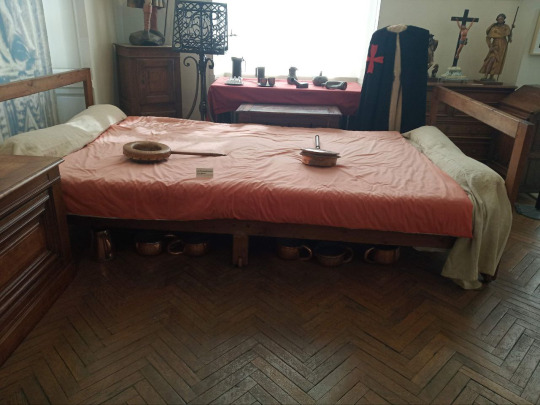
57 notes
·
View notes
Text
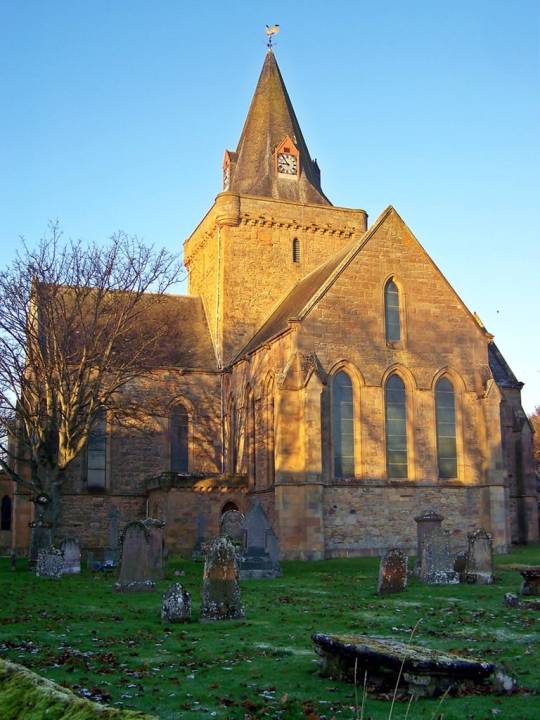


1st April 1245 saw the death in Scrabster Castle of Gilbert de Moravia Bishop of Caithness and the man who founded Dornoch Cathedral.
Gilbert de Moravia was the son of Muiredach, who in turn was son of Alexander de Moravia. The names suggest a noble family with roots in Moray, and it is thought that Gilbert was a cousin of William de Moravia, who became 1st Earl of Sutherland in 1230. Having chosen to pursue a career in the church, Gilbert spent a number of years serving as the archdeacon of the Bishopric of Moray. He was appointed to the position of Bishop of Caithness in 1222 by King Alexander II of Scotland.
As much as the Church had power back in the god fearing Medieval times the job of Bishop had it's risks. Gilbert's predecessor, Adam of Melrose, had been killed at his residence in Halkirk by farmers angry at a doubling in the episcopal tax levied on agricultural production, and Adam's predecessor had himself had his eyes and tongue removed by Harald Maddadsson, Earl of Orkney and Mormaer of Caithness, ironically for resisting increases of taxation on the peasantry.
Gilbert de Moravia owned estates in and around what is now Dornoch, and it was felt that it would be safer for him to move the seat of the diocese south. Gilbert therefore commissioned (and paid for) a Cathedral Church in Dornoch, as well as residences for ten canons. Gilbert himself was based at Skibo Castle, while spending some of his time in the more turbulent north at Scrabster Castle. His successors as bishop would establish a palace in Dornoch that has since evolved into Dornoch Castle.
Gilbert died at Scrabster Castle on 1st April 1245, and has since been said to have been "one of the noblest and wisest ecclesiastics the medieval church produced." He was buried at Dornoch, and his relics lay there until the wanton destruction during the Reformation.
Gilbert was the last pre-Reformation Scotsman to be canonised, and his achievement in erecting a building of the size and stature of Dornoch Cathedral in such a remote corner of the Scottish Highlands in the 13th century is truly remarkable.
26 notes
·
View notes
Text
I don't know if anyone has pointed this out yet in the Les Mis Letters tag, but I figured I'd mention it just in case: the Bishop Myriel is based on a real historical person:
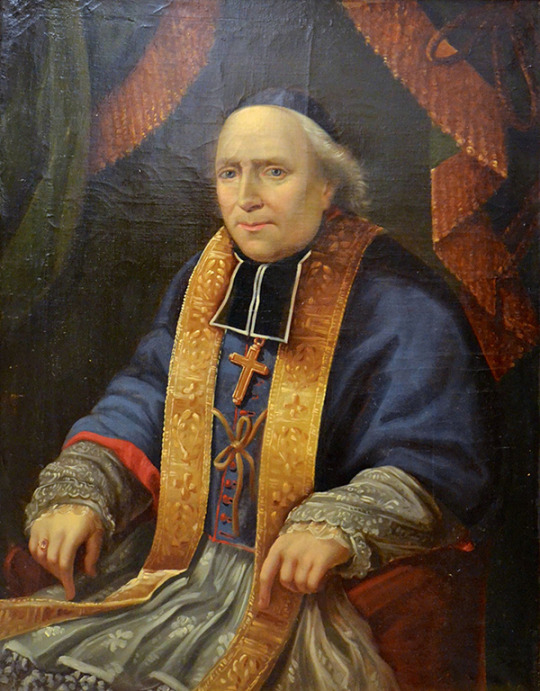
Both were bishops of Digne beginning in 1806, both known as "Monseigneur Bienvenu", both famous for their charity and humility.
There are differences as well of course, but the source of inspiration is clear.
Miollis also didn't live in the episcopal palace although the part about switching with a hospital isn't accurate. According to this source I found linked on the official page of the Diocese of Digne (on a website that looks like it's from the very early 00's at best), if I understood correctly, the palace wasn't available as it had been taken over by the district during the Revolution and was being used for various administrative offices.
This is a PDF link, just to warn you:
A son arrivée à Digne, l'immeuble n'étant pas en état, il acquit une maison bourgeoise, rue de l'Hubac (la maison est bien à son nom au cadastre de Digne), où il vécut modestement et très charitablement.
He acquired a bourgeois house on the rue de l'Hubac, where he lived modestly. I'm not entirely sure what the palace being "pas en état" means in this context tbh, I'm sorry.

The house where Miollis lived
Picture by Szeder László

Close up of the plaque
Picture by Renaud Camus
This house was not next to the episcopal palace (circled in red on the right) but closer to the Cathedral St. Jérôme in the old city centre, see the red arrow:

(Map from 1921 which is over a century later and thus isn't quite accurate for our era, but it was the oldest map I could find that shows the buildings clearly and readably; modern maps lack the palace which has since been demolished)
The house is sort of behind a few retaining walls (?) and downhill from the cathedral, there is a rather steep hill to climb, but it's a very short walk otherwise (the Cathedral is built right on top of the hill, it's hard to see from the map but all the houses and streets around the cathedral are built on a very steep slope in all directions, each "ring" of houses lower than the last one as you get further from the cathedral.)
232 notes
·
View notes
Text

camino frances / astorga
© 2023 Yiannis Krikis
#astorga#episcopal palace#lensblr#lensculture#fine art photography#photographers on tumblr#architecture#spain#camino frances
54 notes
·
View notes
Text

Palacio de Gaudi Astorga (Episcopal) en Astorga, León, ESPAÑA
76 notes
·
View notes
Text

Palacio episcopal de Antoni Gaudí y catedral, Astorga, 2011.
#architecture#antoni gaudi#episcopal palace#cathedral#astorga#león#castilla y león#españa#2011#photogrphers on tumblr#camino francés#camino santiago
3 notes
·
View notes
Text
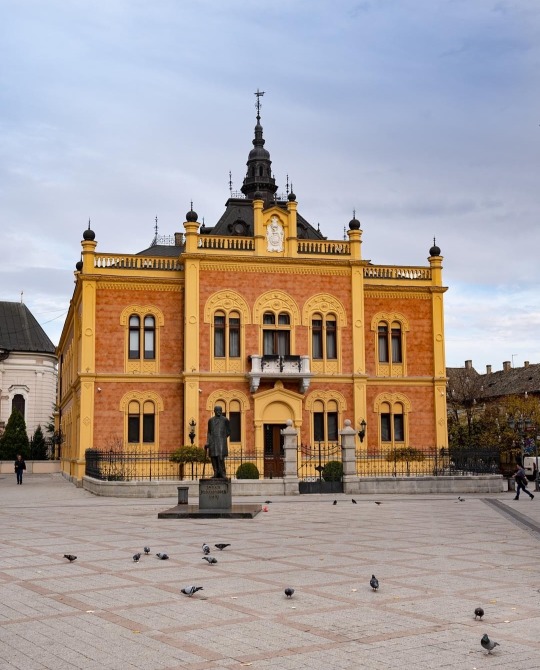


Episcopal palace in Novi Sad, Serbia. Built in 1901 and designed by Serbian architect Vladimir Nikolić.
44 notes
·
View notes
Text
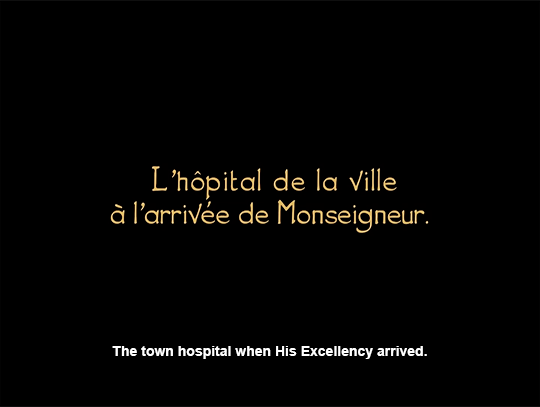

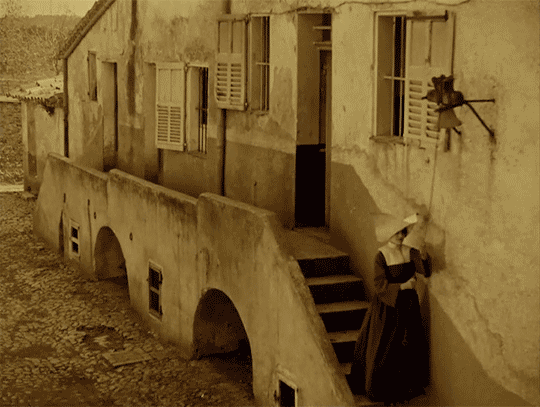



LES MIS LETTERS IN ADAPTATION - M. Myriel Becomes M. Bienvenu, LM 1.1.2 (Les Miserables 1925)
The episcopal palace of Digne adjoins the hospital.
The episcopal palace was a huge and beautiful house, built of stone at the beginning of the last century by M. Henri Puget, Doctor of Theology of the Faculty of Paris, Abbé of Simore, who had been Bishop of Digne in 1712. This palace was a genuine seignorial residence. Everything about it had a grand air,—the apartments of the Bishop, the drawing-rooms, the chambers, the principal courtyard, which was very large, with walks encircling it under arcades in the old Florentine fashion, and gardens planted with magnificent trees. In the dining-room, a long and superb gallery which was situated on the ground floor and opened on the gardens, M. Henri Puget had entertained in state, on July 29, 1714, My Lords Charles Brûlart de Genlis, archbishop; Prince d’Embrun; Antoine de Mesgrigny, the capuchin, Bishop of Grasse; Philippe de Vendôme, Grand Prior of France, Abbé of Saint Honoré de Lérins; François de Berton de Crillon, bishop, Baron de Vence; César de Sabran de Forcalquier, bishop, Seignor of Glandève; and Jean Soanen, Priest of the Oratory, preacher in ordinary to the king, bishop, Seignor of Senez. The portraits of these seven reverend personages decorated this apartment; and this memorable date, the 29th of July, 1714, was there engraved in letters of gold on a table of white marble.
The hospital was a low and narrow building of a single story, with a small garden.
#Les Mis#Les Miserables#Les Mis Letters#les Mis Letters in Adaptation#LM 1.1.2#Les Mis 1925#Les Miserables 1925#lesmisedit#lesmiserablesedit#lesmis1925edit#lesmiserables1925edit#pureanonedits#the SETS of 1925!!#I wish this kept the order and impact of the brick though.#Oh well.
19 notes
·
View notes
Text

Le Pape. Art by Richard Méric.
Mediator between heaven and earth, faith, whatever the form it takes, is for humans the only sun that never sets. Five popes greet each other at the edge of an episcopal palace whose ceiling is a beach open to the ocean.
3 notes
·
View notes